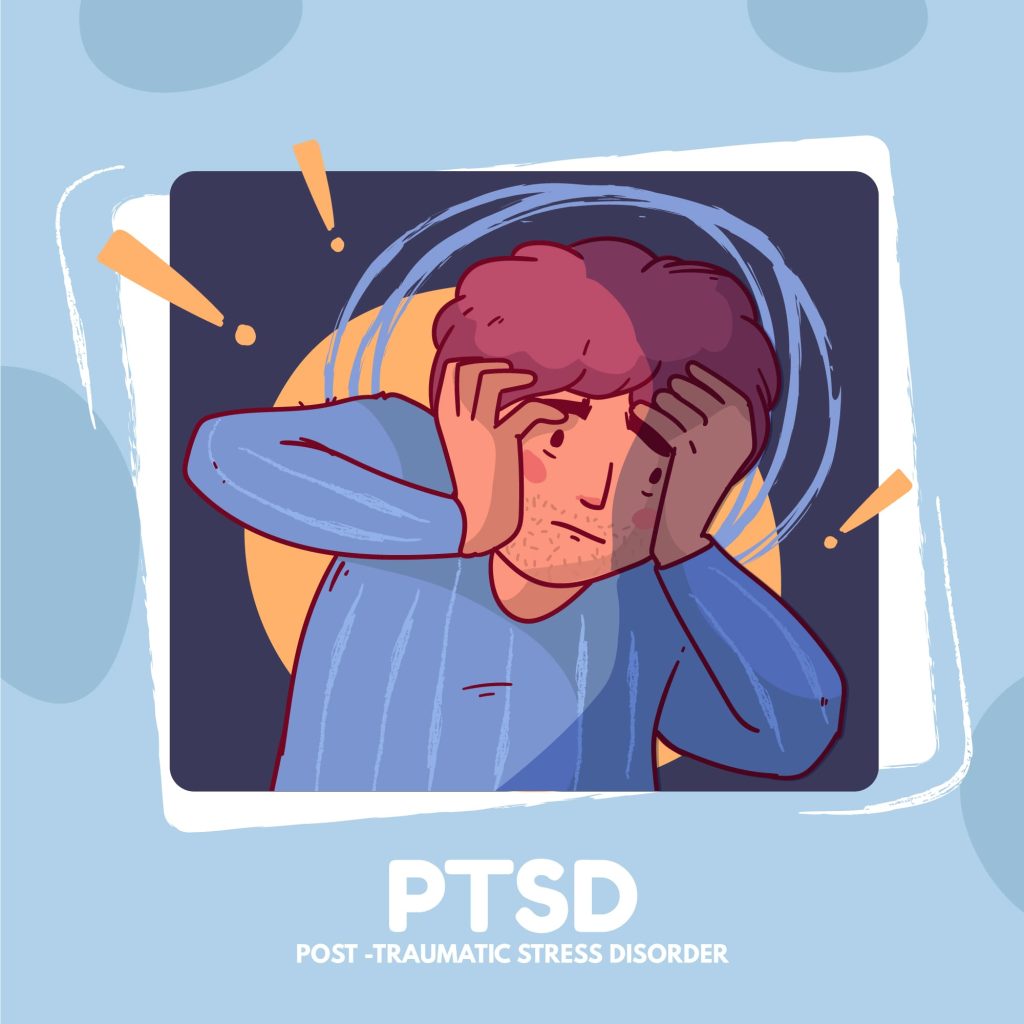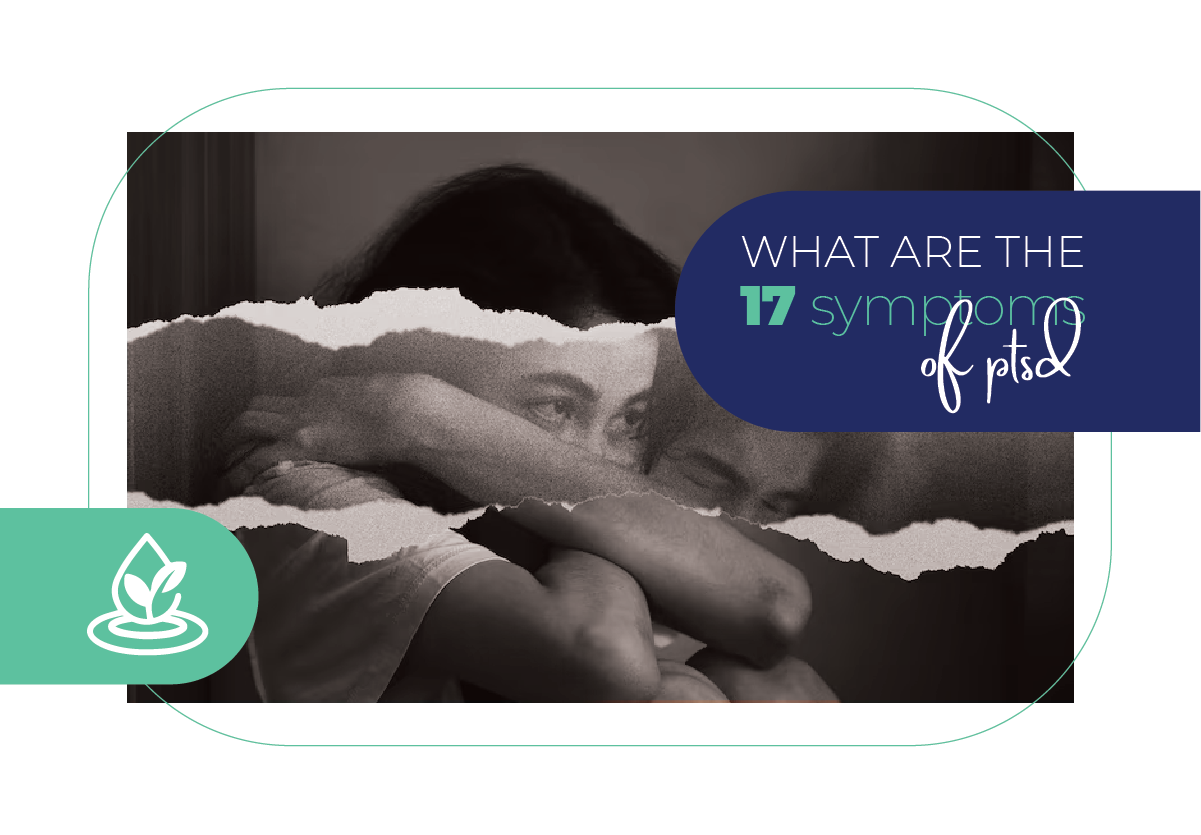Post-Traumatic Stress Disorder is a widely misunderstood psychiatric disorder.
It has an ongoing and sometimes overwhelming sense of fear and helplessness after a traumatic event.
PTSD shows a lot of symptoms that can adversely affect one’s life.
But what are the 17 symptoms of PTSD exactly?
This post will demystify PTSD by examining the 17 symptoms associated with the condition.
We will provide important info for those who are directly affected and also provide a resource for friends and families who wish to support them.
So let’s get started.
What Are the Tremors of Trauma?
PTSD is an invisible injury, an echo of harrowing events reverberating through the survivor’s life.
It actually causes four main types of symptoms:
- Intrusion
- Avoidance
- Alterations in cognition and mood
- Alterations in arousal and reactivity
We will break these down in detail.
Recognizing these symptoms requires not only recognition but also empathy and a supportive environment.
Why Is It So Important to Recognize PTSD Symptoms?
That’s because early treatment and support can lessen the effects and lead to better outcomes for those who are suffering from it.
What Are the 17 Symptoms of PTSD?

Each of the 17 symptoms of PTSD digs deep into both psychological and physiological effects of trauma — they highlight the extensive nature of PTSD.
Intrusion Symptoms
1. Distressing Memories
These are the flashbacks that hit you when you least expect them, transporting you back to the scene of the trauma with vivid and distressing detail.
2. Recurrent Nightmares
Nightmares are not mere bad dreams — they are intense replays of the traumatic incident, disruptive to sleep and the peace it should bring.
3. Flashbacks
Flashbacks can be as unsettling for the observer as they are for the individual experiencing them, as they lose touch with present reality and feel once again in immediate danger.
4. Emotional Distress at Trauma Reminders
A smell, a sound, or a location that was present during the traumatic event can elicit overwhelming emotions, making it seem as though the trauma is happening again.
Avoidance Symptoms
5. Avoidance of Reminders
This is the conscious, yet uncontrollable act of steering clear of anything that may evoke memories or thoughts about the traumatic event.
6. Avoidance of Feelings
The mind’s defense mechanism is powerful — it can push down feelings so deep that one may feel completely numb to the world.
7. Amnesia for Trauma-related Details
In some cases, the brain may defensively repress traumatic details to protect the individual from experiencing the painful memory.
Alterations in Cognition and Mood
8. Negative Thoughts or Feelings about One’s Self
PTSD can instill a negative self-image, often leaving the individual with a deep sense of shame, guilt, or other destructive emotions.
9. Blaming Self or Others for the Trauma
This symptom can manifest in multiple negative ways. The survivor may unjustly blame themselves or harbor resentment toward others, exacerbating feelings of isolation and distrust.
10.Inability to Remember Key Features of the Trauma
Some individuals may display selective memory regarding crucial aspects of their traumatic experience, which can create significant psychological distress.
11. Exaggerated Startle Response
PTSD survivors can have an acute startle response, often leading to a state of hypervigilance where they jump at the smallest of cues, perpetually on edge.
12. Hyperactivity and Hypervigilance
An unavoidable state of heightened alertness that can be exhausting in its unrelenting demand on the body and mind.
13. Problems with Concentration
This symptom can be incredibly frustrating for survivors as they struggle to maintain focus on tasks that would otherwise be undemanding.
14. Sleep Disturbances
PTSD can wreak havoc on one’s sleep patterns, causing restless or disturbed sleep, insomnia, or even full-blown night terrors.
Alterations in Arousal and Reactivity
15.Irritability or Aggression
Feeling as though one is constantly under threat can lead to increased irritability and potential outbursts of anger, sometimes directed at those closest to the individual.
16.Reckless or Self-destructive Behavior
Seeking out risky situations can be a subconscious coping mechanism, a way to feel something other than the debilitating effects of PTSD.
17.Hyper-vigilance
Sufferers of PTSD are often described as being hyper-alert to their surroundings, which can lead to feelings of steeped paranoia and social withdrawal.
Impact on Daily Life
Understanding the symptoms alone is not sufficient; we must comprehend how they affect our daily existence.
PTSD isn’t a static condition but one that interacts dynamically with the survivor’s life and challenges the norms of ordinary living.
Relationships and Social Interactions
PTSD can be an insidious barrier to healthy relationships and can cause strain and misunderstanding between partners, families and friends.
Communication becomes tense and intimacy — be it emotional or physical — is lost on the altar of avoidance and numbness.
Work and Productivity
Survivors of PTSD can find it hard to maintain stable employment because of the unpredictable nature of their symptoms.
They battle stigma and misconceptions about mental health in the workplace which causes isolation and deterioration of their condition.
Self-care and Coping Mechanisms
Personal care and coping strategies can suffer when PTSD takes over as survivors often find it difficult to maintain the willpower or motivation to pursue activities that once brought them relief or peace.
Seeking Help and Support
Thankfully there are ways to heal for those who bear the burden of PTSD.
Seeking professional help is a necessary step to regaining self-control and inner peace.
Psychotherapy Options
Therapies like these allow survivors to reframe their traumatic experiences and rebuild their lives:
- Cognitive-behavioral therapy (CBT)
- Exposure therapy
- Eye movement desensitization and reprocessing (EMDR)
Self-care Practices
Daily routines that support relaxation and mindfulness can be instrumental in easing PTSD symptoms.
These are just a few examples of the self-care practices that have helped countless PTSD survivors:
- Yoga
- Meditation
- Mindfulness exercises
Support Groups and Resources
There are numerous support groups and resources available, both in-person and online that offer comfort, understanding and practical advice from those who have been through the same thing.
In Closing
The symptoms of PTSD are not absolute but a call to action for more awareness, understanding and support.
With an understanding of the tremors of trauma we open the way for a more caring society that acknowledges the silent battles fought by those with PTSD.
If you or someone you know is struggling with PTSD, seek treatment at Atlantis Integrative Medicine & Psychiatry Wellness Center.
Early recognition and treatment are essential — and a gesture of compassion today can carry healing for years to come. Contact us today.
FAQ Section
Is flinching a sign of trauma?
Yes flinching can be a sign of trauma. It’s natural response to an apparent threat or danger.
What not to say to someone with PTSD?
Avoid saying things like “snap out of it” or “you should just move on.”
Before and after PTSD?
Before experiencing trauma, a person may have a feeling of normalcy but after developing PTSD they might struggle with symptoms like flashbacks, nightmares and anxiety.
Are PTSD and blackouts associated?
PTSD might lead to blackouts where someone could have moments of lost consciousness or memory gaps.
Does PTSD show on MRI?
PTSD does not have a specific MRI signature.
What does a PTSD episode look like?
It might involve symptoms like:
- Intense anxiety
- Intrusive thoughts or memories
- Emotional distress
- Rapid heartbeat or sweating
Emotional flashback vs panic attack?
An emotional flashback happens when something triggers intense emotions from past trauma. A panic attack is a sudden wave of fear or anxiety with physical symptoms like shortness of breath and chest pain.
What are some signs of PTSD at work?
Signs of PTSD at work can include:
- Not being able to concentrate
- Hypervigilance
- Irritability
- Avoidance of certain tasks or situations
- Changes in work performance
Which of the following is not a symptom of PTSD?
Happiness is not a symptom of PTSD.
Does PTSD get worse with age?
PTSD symptoms can improve over time with proper treatment but for some people they may remain or even worsen with age if left untreated.
What’s a PTSD exaggerated startle response?
An exaggerated startle response is a common symptom of PTSD. People might get jumpy or easily startled especially when something reminds them of the traumatic event.
What are PTSD anger outbursts?
People might feel really angry or irritated usually because something reminds them of the trauma they went through.







No comment